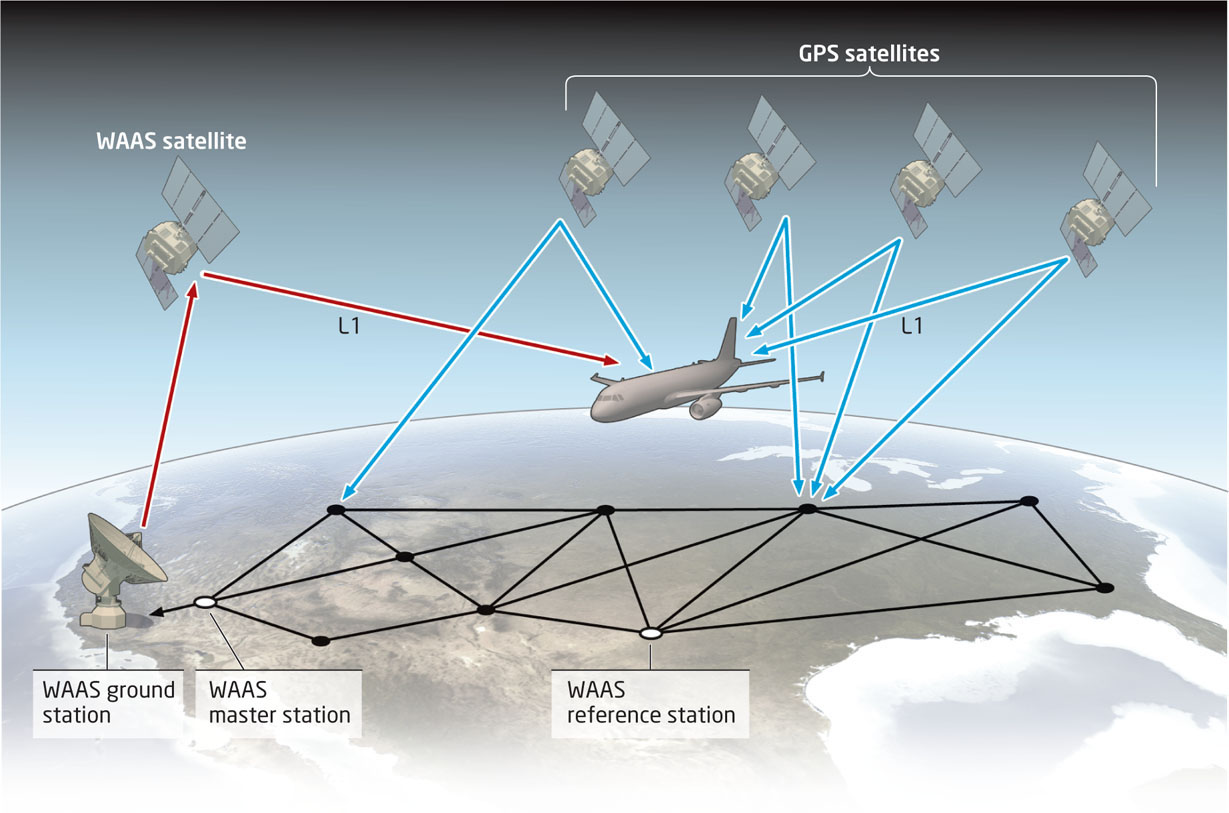4.5 
How Can You Get Better Accuracy from GPS?

DGPS Differential GPS—a method using a ground-based correction in addition to the satellite signals in position determination
A few methods have been developed to improve the accuracy of GPS position measurements, and to deal with the problems that cause the kinds of errors described above. The first of these is a process referred to as differential GPS (or DGPS). This method uses one or more base stations at locations on the ground to provide a correction for GPS position determination. The base station is positioned at a place where the coordinates are known, and it receives signals from the satellites. Since the base station knows its own coordinates, it can calculate a correction to any error that causes the position measurement from the satellites to locate it in the wrong place. The base station can then broadcast this correction out to receivers equipped to collect this type of differential correction. Thus, when you’re using DGPS, your receiver is picking up the usual four satellite signals plus an additional correction from a nearby location on the ground (see Figure 4.9 for an example of the operation of DGPS). As a result, the position measurement can be reduced to 5 meters or less (and often less than 1 meter).

NDGPS National Differential GPS—it consists of ground-based DGPS locations around the United States
CORS Continuously Operating Reference Stations—a system operated by the National Geodetic Survey to provide a ground-based method of obtaining more accurate GPS positioning
SBAS Satellite based augmentation system—a method of using correction information sent from an additional satellite to improve GPS position determination
WAAS Wide Area Augmentation System—a satellite based augmentation system that covers the United States and other portions of North America
Today, there are DGPS locations all over the world. In the United States, the U.S. Coast Guard has set up several reference stations along the coasts and waterways to enable ships to find their exact location and to improve navigation. The U.S. Department of Transportation operates the NDGPS (Nationwide Differential GPS) system of DGPS locations, and aims to provide drivers and travelers with the most accurate position information that’s available. NDGPS reduces position error to 1 to 2 meters.
92
A related program, CORS (Continuously Operating Reference Stations), is operated by the National Geodetic Survey, and consists of numerous base stations located across the United States and throughout the world. CORS collects GPS information and makes it available to users of GPS data (like surveyors and engineers) to make more accurate position measurements. CORS data provides a powerful tool for location information for a variety of applications (such as the U.S. Army establishing CORS in Iraq as an aid in the rebuilding efforts).
Satellite based augmentation systems (SBAS) are additional resources for improving the accuracy of position measurements. SBAS works in a similar way to DGPS, in that a correction is calculated and picked up by your receiver, as well as by the regular four satellites. However, in this case, the correction is sent from an additional new satellite, not from an Earth-bound station. A good example of an SBAS is the Wide Area Augmentation System (WAAS), which was developed by the Federal Aviation Administration (FAA) to obtain more accurate position information for aircraft. WAAS has developed widespread uses beyond the world of aviation as a quick and easy method of improving overall GPS position accuracy.
WAAS operates through a series of base stations spread throughout the United States that collect and monitor the signals sent by the GPS satellites. These base stations calculate position correction information (similar to the operation of DGPS) and transmit this correction to geostationary WAAS satellites. These WAAS satellites then broadcast this correction signal back to Earth, and if your receiver can pick up this signal, it can use the information to improve its position calculation (Figure 4.10). WAAS reduces the position error to 3 meters or less. One drawback to WAAS is that it will only function within the United States (including Alaska and Hawaii) and nearby portions of North America (although WAAS base stations have recently been added to Mexico and Canada, greatly expanding the availability of WAAS advantages). There are other systems that improve the accuracy of position calculation, but they all operate on the same principle as WAAS and DGPS (some sort of correction is calculated and transmitted to a receiver, which uses it to determine its position).
